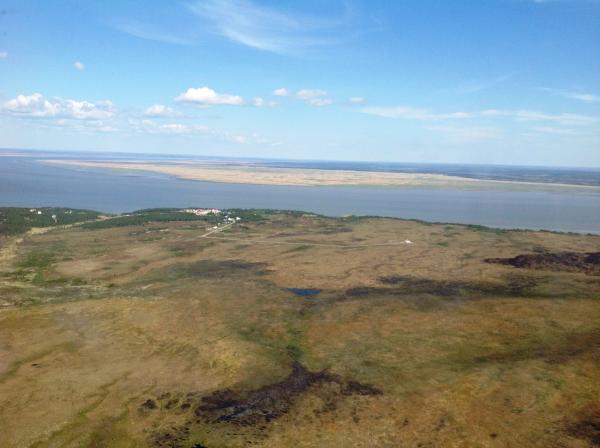Due to a late green up and unseasonably warm temperatures, Southwest Alaska’s fire risk stands at very high to extreme. State fire officials report 21 wildfires already this year in the southwest portion of the state. Tom Dean is the acting Fire Management Officer for Southwest AK for Division of Forestry.
"It increases the flammability of the fuels because they're still dead and dry from the year before. Once we get into green up, that green grass grows up and it's not as flammable. That's probably the biggest concern. These flashy fuels are ones that produced the Snake River fire last year. It's brown grass, very flammable," said Dean.
Tundra grasses are by no means the only flammable material, according to Kristi Bulock, the southwest area fire manager for refuges.
"The Boreal forest, the black spruce, feather moss are receptive to ignition right now. This time of year, the black spruce is at its lowest fuel moisture, and it can sustain crown fires. You have to be careful, there's a spring dip, and you start getting moisture and the fuel moisture goes up.Then they're less flammable in another couple weeks or so," said Bulock.
Lighting strikes have started at least 20 fires this year. The Doestock creek fire southeast of Aniak burned 30 thousand acres earlier this month. 240 acres at Shipwreck Cove in Katmai National Park burned before the fire ran into rocks around May 20th.
That fire was started by people camping. Dillingham Assistant Fire Chief Malcolm Wright urges everyone to move dry materials away from their homes and vehicles and use caution.
"Any cooking or trash fires need to be carefully controlled. We've haven't put out any bans at this point, but we may need to look at it. We're basically relying on people to keep any outside burns well controlled and not allow embers to blow away from them," said Wright.
Fireworks and cigarette butts are two big fire risks within town. The Department has responded to one grass fire this year, that was largely extinguished out by neighbors, but it still burned an area about 100 feet square. Wright says the grass fires can start and burn quickly.
"In the bright sun, they're almost invisible sometime. We've seen past situations where a fire ignites someone's greenhouse or even the skirting of their house before anyone realizes there is a fire. Prevention is major factor," said Wright.
There no active burn bans in Dillingham, but the City of Aleknagik has banned burning at the north shore landfill. The state’s Tom Dean says there is a statewide network of firefighting equipment in place, but it doesn’t come instantly.
"We have retardant ships based out of Palmer and Fairbanks. The can get here in an hour and half or an hour and 45 minutes. But that can be a long time when a fire is starting to go. We have smoke jumpers based in McGrath, prepositioned specifically for the west coast because of the high fire danger. They're fast responding aircraft, they can be here in about a hour, maybe an hour and ten minutes to jump the fire. There's two helicopters in McGrath that could hopscotch down here. You're out there. The best case scenario is not starting any fires. We're going to do some training with local firefighters to learn how to fight wildland fires. They're the best people to put them out when they're small. That's the whole point of it. If there's an 1/8th of an acre fire, a quarter acre fire, if the local community and fire department can put it out, then we don't need to launch all this equipment down here," said Dean.
Statewide in 2013, 187 fires have burned more than 46 thousand acres.



